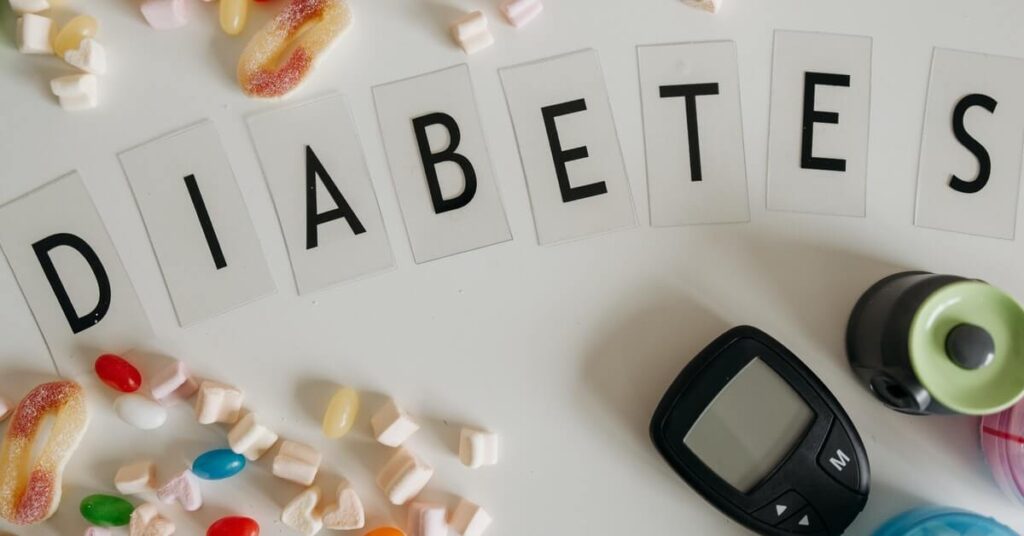Diabetes Mellitus Introduction
You have often heard about the term diabetes mellitus. Aren’t you?
Actually, you can define diabetes mellitus as a metabolic disease that becomes the reason for high blood sugar.
Some people call it diabetes or some diabetes mellitus.
It occurs when the pancreas doesn’t produce enough insulin or the body cells cannot respond properly to the insulin it produced to control the amount of glucose or sugar present in your blood.
It can cause high blood sugar which is known as hyperglycemia or low blood sugar which is known as hypoglycemia. Both conditions are very dangerous and can risk your life.
People with diabetes need to manage their diabetes to stay healthy. Otherwise, having too much high blood glucose and too low blood glucose can cause health problems which I have discussed in later sections of this post.
Although diabetes has no cure, you can take steps to manage your diabetes and stay healthy. You always have to keep a watch on your blood sugar level to control it.
Insulin
Beta cells present in the pancreas produce insulin as a hormone that transports the glucose from the bloodstream into the body cells for use as energy.
The digestive tracts break down carbohydrates present in certain types of food to produce glucose. It is the main source of energy.
Insulin allows body cells to store this glucose and use it as a source of energy to function properly.
Extra glucose that is not used by the cells is converted and stored as fat so it can be used to provide energy when glucose levels are too low.
Without insulin, body cells are unable to use glucose as fuel and they will start malfunctioning.
Insulin has several other metabolic effects such as stopping the breakdown of protein and fat.
Types of diabetes mellitus
Diabetes develops in different forms depending on the cause.
There are mainly four types of diabetes.
- Type 1 diabetes
- Type 2 diabetes
- Gestational diabetes
- Prediabetes
Type 1 diabetes
Autoimmune reactions are responsible for type 1 diabetes. It causes the immune system to attack and destroy beta cells with antibodies in your pancreas that produce insulin. The damage is permanent.
In this type of diabetes, the pancreas is fully unable to produce insulin, so you need daily insulin injections to maintain your blood glucose levels. That’s why you can call it insulin-dependent diabetes.
Type 1 diabetes develops due to both genetic and environmental reasons. It often begins in the childhood and adolescence stages. So, you can call it juvenile-onset diabetes.
Type 2 diabetes
When there is not enough production of insulin in your body or your body cells are not able to respond to insulin as they should, then type 2 diabetes develops. It is the most common type of diabetes.
There is insulin resistance in your body with type 2 diabetes. In the later stages of this disease, your body may not produce enough insulin, and then too much glucose stays in your blood and the body cells are not able to get enough glucose.
This type of diabetes mostly develops in middle-aged and older people that’s why you can call it adult-onset diabetes.
But it can also affect kids and teens mainly because of childhood obesity, unhealthy lifestyle, and genetics sometimes.
Uncontrolled type 2 diabetes can lead to high blood levels causing several symptoms and may lead to serious complications.
The good news is that you can take steps to prevent or delay the development of type 2 diabetes.
Gestational Diabetes
Gestational diabetes develops first time during pregnancy. Insulin resistance causes this type of diabetes because the hormones from the placenta that help the baby develop may block the action of insulin in the mother’s body.
When the mother’s body is not able to make and use all the inulin it needs for pregnancy, the body will not be able to transfer glucose in cells and stays in the blood, this causes high blood sugar or hyperglycemia.
This type of diabetes usually shows up in 24 to 28 weeks, in the middle of pregnancy.
High blood glucose can affect pregnancy and the baby’s health. They may not be able to prevent type 2 diabetes in the future but they can control it by eating healthy foods and exercising only. In some cases, the doctor prescribes insulin and medications.
In this type of diabetes, blood glucose usually returns to normal soon after delivery.
Prediabetes
Prediabetes is a condition where your blood sugar level is higher than it should be but not that much which can cause diabetes mellitus. It is also said to be borderline diabetes.
Your doctor may call it impaired fasting glucose or impaired glucose tolerance.
People with type 2 diabetes always had pre-diabetes first. It is difficult to get aware of type 2 diabetes because usually, it doesn’t show any serious symptoms or signs.
If you will not take prediabetes seriously, it can turn into type 2 diabetes and cause several complications like heart disease and kidney failure.
The prediabetes condition is an opportunity to take control of your health before there are any serious consequences.
Prediabetes treatment can prevent some serious problems including type 2 diabetes, problems related to the heart, blood vessels, eyes, and kidneys.
The prediabetes condition can be reversed by doing exercise, eating healthy foods, and a healthy lifestyle.
Signs and Symptoms
Do you know what symptom means? Don’t worry you will get the answer here ‘Symptom is a change in your body which is the sign of illness’ defined on google.
Different types of diabetes show different signs and symptoms. It varies depending on how much blood sugar level is elevated.
More often in type 2 diabetes and prediabetes, symptoms and signs of diabetes arise very late or it may show up very slowly. Sometimes it can’t be identified in the initial stage. People may not experience symptoms for a very long time.
But in type 1 diabetes symptoms may show up very quickly and it can be more severe in a matter of weeks.
Here are some of the symptoms of type 1 and type 2 diabetes. If you have any of the following diabetes symptoms, see your doctor for a blood sugar test and further tests and treatments.
- Excessive thirst
- Frequent urination
- Extreme hunger
- Unexpected weight loss
- Presence of ketones in the urine
- Fatigue
- Irritation
- Blurry vision
- Slow-healing sores
- Frequent infections related to skin
- Numb or tingling hands or feet
- Very dry skin etc.
Diabetes is a chronic disease, if you have any of these symptoms you have to take it seriously and run to the doctor for advice.
Causes of diabetes mellitus
The causes of diabetes vary based on the individual and particular type. There are no common causes of diabetes for every type of diabetes.
Genes and environment may be common causes that are responsible for triggering diabetes.
Different causes are associated with different types of diabetes.
Causes of type 1 diabetes
Type 1 diabetes is caused when your immune system attacks and destroys the insulin-producing beta cells of the pancreas.
Some scientists claim that this type of diabetes can be caused due to genes and the environment.
Causes of type 2 diabetes
Type 2 diabetes is also caused by genes and the environment, but some other factors can cause type 2 diabetes.
- Lifestyle
- Overweight
- Obesity
- Physical inactivity
- Damage of pancreas like pancreatitis, pancreatic cancer.
Causes of gestational diabetes
Gestational diabetes is caused by hormonal changes during pregnancy. Due to pregnancy, there is insulin resistance which can cause this type of diabetes.
There are some other factors also which cause gestational diabetes.
- Overweight when the female is pregnant
- Too much weight gain during pregnancy.
- Family history of gestational diabetes.
Excessive medicines and hormonal diseases are some other common causes of all types of diabetes.
Risk factors for diabetes mellitus
For any disease, there are modifiable and non-modifiable risk factors that cause the disease.
Here we are talking about the risk factors of diabetes. Knowing the risk factors for diabetes before a diagnosis can prevent its more severe effects and damages.
There is a high possibility that diabetes does not show any symptoms in its early stages, so taking steps to reduce the risk factors can prevent or even reverse the condition.
Risk factors for diabetes depend on the types of diabetes.
Risk factors of type 1 diabetes
Here are some factors that may increase the risk of type 1 diabetes, but the exact cause is unknown.
- Family history: If your parents or siblings are diagnosed with diabetes, then it may increase the risk of being type 1 diabetic.
- Pancrase injury: Any type of pancreas injury like pancreatitis, pancreatic cancer can affect insulin production and increase the risk.
- Environmental factors: Some environmental factors like exposure to illnesses caused by viruses may be one of the risk factors of type 1 diabetes.
Risk factors of type 2 diabetes
Some factors affect insulin usage in the body which increases the risk of this type of diabetes. Those are:
- Obesity/Overweight: The more fatty tissues you will grow, the more resistant your cells become.
- Prediabetes: If you are unable to reverse your prediabetes, this can be the risk factor for type 2 diabetes.
- Race or ethnicity: It has been seen that mostly, non-white people have the risk of getting diagnosed with this type of diabetes.
- Inactivity: Physical inactivity like no workouts, no exercises and laziness are some factors for developing type 2 diabetes.
- Age: After the age of 45 or older if you are overweight, lazy, and not doing any exercise, then you are more likely to develop type 2 diabetes.
- Gestational Diabetes: If a woman is diagnosed with gestational diabetes during her pregnancy, it may be a risk for her to develop type 2 diabetes.
- Abnormal cholesterol and triglyceride level: Low-level HDL(High-Density Lipoprotein) or good cholesterol and high level of triglyceride may also be a risk factor for developing type 2 diabetes.
A sedentary lifestyle, depression, stress, and having a history of heart disease or stroke are some factors that may increase the risk of type 2 diabetes.
Risk Factors for gestational diabetes
This type of diabetes develops in women during pregnancy. Here are some risk factors which a mother should take care of:
- Family history: You may be at risk if your parents or sibling have diabetes.
- Personal history: If you have developed gestational diabetes during your previous pregnancy, then you may be at risk during your current pregnancy.
- Race or Ethnicity: Non-white women are at higher risk.
- Obesity: Fat tissues developed can resist cells to use insulin.
Complications of diabetes mellitus
People with diabetes have a high risk of developing serious complications if they fail to manage their blood sugar level is for the long term. It can cause serious damage to the parts of the body.
These are long-term problems that can develop gradually and can lead to serious damage if they go unchecked and untreated.
- Neuropathy: Extreme high blood sugar can injure the walls of tiny blood vessels that nourish your nerves. The process of nerve damage from diabetes is defined as diabetic neuropathy. About half of all people with diabetes have some form of nerve damage.
- Cardiovascular disease: Uncontrolled blood sugar can cause the risk of cardiovascular problems including coronary artery disease with chest pain, heart attack, stroke.
- Skin Complications: Diabetes may become the reason for your skin problems including bacterial and fungal infection.
- Kidney disease(Nephropathy): Diabetes can damage the filtering system in the kidney. It can lead to kidney failure or irreversible end-stage kidney disease which may require dialysis or a kidney transplant.
- Eye complications: Diabetes can damage the blood vessels of the retina which may lead to eye damage.
Prevention of diabetes mellitus
Prevention of type 1 diabetes is not possible because the complications of the immune system cause it. Also, some causes of type 2 diabetes are not preventable like genes or age.
But there are some habits and behavior you should consider to prevent type 2 diabetes.
- You should avoid sugary products and refined carbs from your diet.
- Exercise regularly.
- Drink water as much as possible.
- You should have a high fiber and low carb diet.
- Avoid intake of processed foods.
- Avoid bad habits like smoking and drinking.
- Be in touch with your health care provider.
Take Away
According to American Diabetes Association, making small changes to the way you eat, increasing your physical activity, or getting early treatment can, for some, actually return blood sugar level to a normal range.
You have to take proper diabetes management precautions to avoid serious complications of diabetes mellitus and consult a diabetes consultant if you are not able to maintain your blood sugar level for a long period of time. You have to always be conscious of your condition.
If you can manage your diabetes conditions and having a proper diet in your meal plan which your health care consultant suggests, then you can easily lead a normal healthy life.
So cheers! You have to play a long game.
Stay healthy! Stay Safe!



